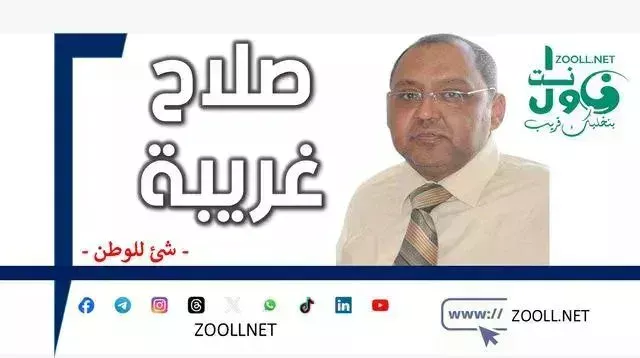The extinction of living organisms, a warning signal of a catastrophe – a gesture for the homeland – ✍️ Mr. Salah Ghariba

On the occasion of World Endangered Species Day (May 11), our concern about the future of our environmental wealth in the Arab world increases, as indicators indicate that the phenomenon of species extinction is worsening a frightening rhythm.
The “Red List” of the International Union for Conservation of Nature (IUCN) paints a grim picture of the reality of living organisms in the Arab world, as it indicates the presence of a very large number of species at the edge from the abyss. Rare animals and birds, such as the Arabian leopard, Arabian gazelle and golden eagle, suffer from destruction of their natural habitat and poaching, while plants face the dangers of overgrazing and blind collection.
Catastrophic proportions go beyond species loss
The threat of extinction of living organisms is not limited to the loss of a rare species, but rather poses a serious threat to the entire ecological balance, because each living organism plays an important role in the ecosystem and its disappearance affects the entire chain. of life.
Humans depend greatly on biological components, from which we derive our food, medicine and other industries, and plants and animals also constitute an important component of tourism and entertainment. The loss of these organisms means depriving future generations of their many benefits, not to mention the negative effects on the national economy.
To protect their species from extinction, we must take decisive action that requires concerted efforts at different levels, by creating more nature reserves that provide a refuge for endangered species, where they are protected from poaching and destruction of environment, while creating breeding centers to increase the number of threatened species, preserving their genetic diversity, preserving the ecosystems in which they live, such as forests and wetlands, to ensure their continuity, raising awareness among members of society of the importance of protecting living organisms through media campaigns and educational programs. , and enact strict laws to protect living organisms from poaching and environmental destruction, effectively enforcing them and supporting studies and research to understand the causes of the extinction of living organisms and find effective solutions To protect them.
Protecting our living creatures is a shared responsibility that falls to all: governments, organizations, communities and individuals. Let us all take concrete steps to preserve this rich wealth which constitutes the basis of our lives and our future.
Sudan and South Sudan are teeming with a great diversity of wildlife, from massive elephants and mighty lions to towering giraffes and soaring birds of prey. But unfortunately, many of these wonderful species are threatened with extinction due to a combination of overlapping factors, which threatens to destroy the ecological balance and cause future generations to lose invaluable natural wealth. Nature (IUCN) reported that there are 183 threatened species in Sudan. With extinction including big cat species, Sudanese lions are suffering from poaching and habitat loss, which has led to a significant decline in their numbers. Sudanese cheetahs are classified as an endangered species. species due to habitat loss and poaching.
Wild tigers in Sudan completely disappeared in the 1960s, while some tigers still exist in captivity. Elephants are facing extinction due to poaching for ivory, which has led to a very significant decline in their numbers. Giraffes are considered one of the most endangered animals. in Sudan, it suffers from habitat loss and overhunting, and many species of birds of prey, such as hawks and eagles, are threatened with extinction due to overhunting and loss of habitat. habitat, and turtles are at risk of extinction due to overfishing, habitat loss and pollution.
Source link




